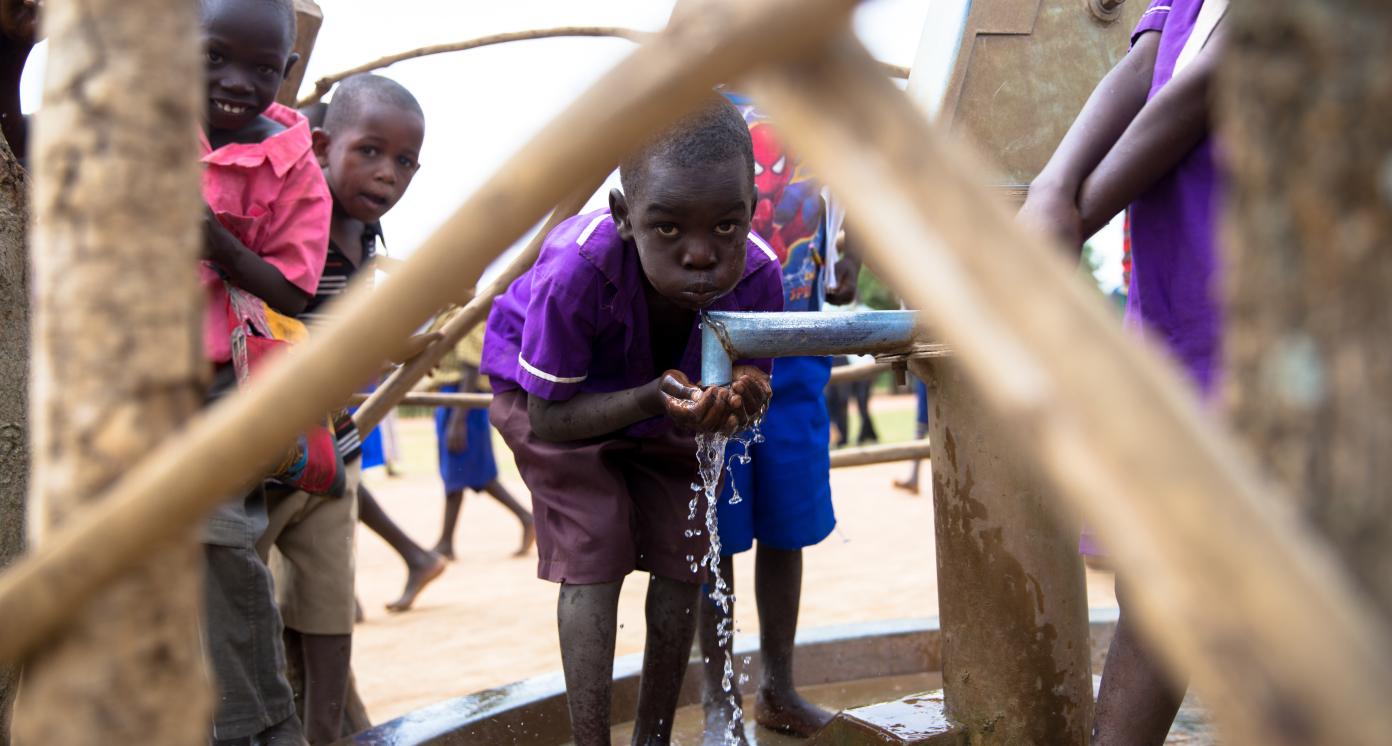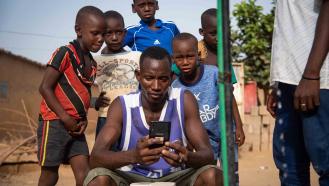Drinking water distillation and distribution





Business Model Description
Develop and operate water distillation facilities and distribute drinking water in 5-10 liter bottles to households without piped water access.
Expected Impact
Enable healthier lives due to access to safe and reliable drinking water at affordable prices.
How is this information gathered?
Investment opportunities with potential to contribute to sustainable development are based on country-level SDG Investor Maps.
Disclaimer
UNDP, the Private Finance for the SDGs, and their affiliates (collectively “UNDP”) do not seek or solicit investment for programmes, projects, or opportunities described on this site (collectively “Programmes”) or any other Programmes, and nothing on this page should constitute a solicitation for investment. The actors listed on this site are not partners of UNDP, and their inclusion should not be construed as an endorsement or recommendation by UNDP for any relationship or investment.
The descriptions on this page are provided for informational purposes only. Only companies and enterprises that appear under the case study tab have been validated and vetted through UNDP programmes such as the Growth Stage Impact Ventures (GSIV), Business Call to Action (BCtA), or through other UN agencies. Even then, under no circumstances should their appearance on this website be construed as an endorsement for any relationship or investment. UNDP assumes no liability for investment losses directly or indirectly resulting from recommendations made, implied, or inferred by its research. Likewise, UNDP assumes no claim to investment gains directly or indirectly resulting from trading profits, investment management, or advisory fees obtained by following investment recommendations made, implied, or inferred by its research.
Investment involves risk, and all investments should be made with the supervision of a professional investment manager or advisor. The materials on the website are not an offer to sell or a solicitation of an offer to buy any investment, security, or commodity, nor shall any security be offered or sold to any person, in any jurisdiction in which such offer would be unlawful under the securities laws of such jurisdiction.
Case Studies
Country & Regions
- Uganda: West Nile
- Uganda: Western
- Uganda: Central
- Uganda: East Central
Sector Classification
Food and Beverage
Development need
70% of Ugandans are employed in agriculture (IX), and the sector constitutes approximately a quarter of gross domestic product (GDP) and a large proportion of exports (III). The agriculture sector is marred by low levels of productivity and output, mainly caused by poor agricultural practices as well as the impacts of climate change.(VII)
Policy priority
The government supports the development of the agriculture sector, emphasising agro-industrialisation in the Third National Development Plan 2020/21 – 2024/25.(IV) The Vision 2040 recognises agriculture as one of the key pillars for the country's development and acknowledges the need for innovation and integration of the sector.(X)
Investment opportunities introduction
Approximately 80% of Uganda's land is arable, however only 35% is currently being cultivated. Agricultural development is predicted to contribute to domestic wealth creation and increased employment.(IV)
Key bottlenecks introduction
The Agriculture Sector Strategic Plan 2015/16 - 2019/20 provides a detailed analysis of opportunities and challenges in agriculture, emphasising agro-processing, innovation, improvement of skills and establishment of market linkages, which will help transform the sector towards industrialisation and higher value adding.(IV)
Beverages
Development need
Only half of Uganda’s population uses basic drinking water services.(1) This means more than 20 million people require access to water from reliable sources.
Non-Alcoholic Beverages
Pipeline Opportunity
Drinking water distillation and distribution
Develop and operate water distillation facilities and distribute drinking water in 5-10 liter bottles to households without piped water access.
Business Case
Market Size and Environment
More than 20 million Ugandans require water from reliable sources.
Only half of Uganda’s population uses basic drinking water services.(1) This means more than 20 million people require access to water from reliable sources.
Less than 20% of the rural population and less than 40% of the urban population has access to basic handwashing facilities including soap and water. With current population growth at 3.6% annually and the pandemic-related new healthcare habits, the number of people looking for reliable water source will likely increase.(1)
Indicative Return
10% - 15%
The estimated return rate for investors is 12.7% to 16.7%. This rate is a benchmark calculated as a cost of equity, reflecting an average return required by investors active in the subsector.(23)
For the benchmark project with a production output of 44,400 liters annually, the assumed profit is USD 69,920 annually. The revenue potential is estimated at USD 81,120 annually. Capital expenditure will be approximately USD 27,200.(21)
Investment Timeframe
Medium Term (5–10 years)
For the benchmark project assuming the production plant with the output of 44,400 liters, the development timeframe for the facility is 4 years.(21)
The sectoral benchmark investment timeframe is estimated to be 5 to 20 years.(23)
Market Risks & Scale Obstacles
Business - Business Model Unproven
Market - Highly Regulated
Capital - CapEx Intensive
Impact Case
Sustainable Development Need
Access to clean and safe drinking water is important for ensuring proper hydration, which improves overall wellbeing, reducing exposure to health threats, by improving hygiene and reducing bacteria spread.(2)
Due to disparities in water access in Uganda, urban people living in poverty pay as much as 22% of their income to access water from water vendors (3), compared with 3% - 5% recommended by the World Health Organization.(4)
Households without a connection to piped water spend several times more on water provided by informal vendors.(2) This reduces overall household income, further limiting opportunities to build savings and break the poverty cycle.
Just over 20% of Uganda’s population has access to basic handwashing facilities including soap and water.(1) This is especially important during the pandemic, because washing hands is an effective way to prevent the spread of coronavirus. According to the US Department of Agriculture (USDA), bottled water can be a substitute to tap water when the latter is not available.(24)
Expected Development Outcome
Improved access to safe drinking water
Reduced cost of safe drinking water
Reduced health hazard
Gender & Marginalisation
Reduced health risks are expected to positively impact women and children in particular
Primary SDGs addressed

3.9.2 Mortality rate attributed to unsafe water, unsafe sanitation and lack of hygiene (exposure to unsafe Water, Sanitation and Hygiene for All (WASH) services)

6.1.1 Proportion of population using safely managed drinking water services
6.5.1 Degree of integrated water resources management
Secondary SDGs addressed



Directly impacted stakeholders
People
Gender inequality and/or marginalization
Corporates
Indirectly impacted stakeholders
Corporates
Outcome Risks
Contribute to an increase in plastic waste
Impact Classification
What
The solution will likely increase the availability of clean water supplies through investments in facilities and distribution of distilled water
Who
Population living in informal or informal settlements without access to drinking water, and the community who will benefit from improved access to safe water
Risk
Although the model is based on good evidence, the market is already competitive. Hence, an innovative sustainable market approach is necessary.
Impact Thesis
Enable healthier lives due to access to safe and reliable drinking water at affordable prices.
Enabling Environment
Policy Environment
Joint Water and Environment Sector Support Programme Phase II 2018-2023: This program aims to help the water sector achieve its targets and improve its performance through support that is aligned to government objectives, policies and delivery modalities.(16)
The Ministry of Trade, Industry and Cooperatives is developing a final policy on bottled water to tackle the tax disparities and boost market growth.(25)
The Ministry of Trade, Industry and Cooperatives, in cooperation with Plastics Recycling Industries, will work on strategies to increase the plastic recycling rate by establishing more collection centres for used water bottles.(25)
National Water Policy: This policy establishes principles and strategies for monitoring, assessing, allocating and protecting water resources and management frameworks, as well as water development and use.(6)
Financial Environment
Fiscal incentives: There is a 10-year income tax exemption for developers and operators in industrial parks or free zones.(20)
Regulatory Environment
Water Act 1997, Cap. 152: This Act determines the application and licensing processes for obtaining water permits, and regulates the use of water resources.(5)
Communication Education Participation and Awareness (CEPA) Strategy for the Ministry of Water and Environment (MWE) for the period 2019 – 2024: This policy provides a framework to improve communication, education participation and public awareness in water, environment and climate change issues.(7)
National Environment Act: This Act establishes controls over coordination, monitoring, regulatory and supervisory activities relating to environment, and establishes regulations for environment protection and hazard mitigation, including responsibilities and obligations of private sector actors.(14)
Environment Impact Assessment Regulations: These regulations describe the process of conducting environment impact assessments, including preparing project briefs, contents and controls.(13)
Clients Charter 2018-2022: This charter sets out the framework for cooperation between the Ministry of Water and Environment and private sector actors.(12)
Marketplace Participants
Private Sector
Hema Beverages Ltd, N.C Beverages Ltd, Wavah Water Ltd
Government
Ministry of Water, Lands and Environment
Multilaterals
European Investment Bank (EIB), African Development Bank (AfDB), International Finance Corporation (IFC), World Bank
Non-Profit
International Reference Centre for Wash, Sanitation and Hygiene (IRC WASH), United Nations International Children's Emergency Fund (UNICEF)
Target Locations
Uganda: West Nile
Uganda: Western
Uganda: Central
Uganda: East Central
References
- (I) World Bank database. (II) Ministry of Agriculture, Animal Industry and Fisheries. Agricultural sector potential in Uganda. https://www.agriculture.go.ug/agricultural-sector-potential/ (IV) National Planning Authority. National Development Plan III (NDPIII) 2020/21 – 2024/25. (V) Fowler, M. and Rauschendorfer, J. (2019). Agroindustrialisation in Uganda. https://www.theigc.org/wp-content/uploads/2019/11/Fowler-and-Rauschendorfer-2019-working-paper.pdf (VI) Rakotoarisoa, M.A., Iafrate, M. and Paschali, M. (2011). Why Has Africa Become a Net Food Importer? http://www.fao.org/fileadmin/templates/est/PUBLICATIONS/Books/AFRICA_STUDY_BOOK_REVISED_low_res.pdf (VII) Government of Uganda. Uganda Green Growth Development Strategy (UGGDS) 2017/18 – 2030/31. (VIII) United Nations Development Programme (2019). Inequalities in Human Development in the 21st Century. Briefing note for countries on the 2019 Human Development Report. Uganda. (IX) World Bank (2018). Making Farming More Productive and Profitable for Ugandan Farmers.https://www.worldbank.org/en/country/uganda/publication/making-farming-more-productive-and-profitable-for-ugandan-farmers (X) Government of Uganda. Uganda Vision 2040. https://consultations.worldbank.org/sites/default/files/materials/consultation-template/materials/vision20204011.pdf
- (5) International Labor Organization. Database of national labour, social security and related human rights legislation. http://www.ilo.org/dyn/natlex/natlex4.detail?p_lang=en&p_isn=97677&p_country=UGA&p_count=130#
- (6) Food and Agriculture Organization of the United Nations. National Water Policy. http://extwprlegs1.fao.org/docs/pdf/uga158331.pdf
- (7) Ministry of Water and Environment. Communication, Education, Participation and Awareness (CEPA) Strategy (2019–2023). https://www.mwe.go.ug/sites/default/files/library/FINAL%20COMMUNICATION%20STRATEGY_0.pdf
- (8) Ministry of Water and Environment (2018). National Climate Change Communication Strategy (2017/2021). http://ccd.go.ug/wp-content/uploads/2018/09/NATIONAL-CLIMATE-CHANGE-COMMUNICATION-STRATEGY_2018.pdf
- (9) Ministry of Water and Environment (2015). Uganda National Climate Change Policy. https://www.mwe.go.ug/sites/default/files/library/National%20Climate%20Change%20Policy%20April%202015%20final.pdf
- (12) Ministry of Water and Environment (2018). Uganda. https://www.mwe.go.ug/library/clients-charter-2018-2022#:~:text=It%20specifies%20standards%20for%20the,feedback%20and%20complaint%20handling%20mechanisms
- (13) Food and Agriculture Organization of the United Nations (2014). Environmental Impact Assessment Regulations 2014. http://faolex.fao.org/docs/pdf/gam177743.pdf
- (14) Government of Uganda (2019). National Environment Act 2019. https://nema.go.ug/sites/all/themes/nema/docs/National%20Environment%20Act,%202019%20(1).pdf
- (15) Ministry of Water and Environment. DPO COVID-19. Government of Uganda. https://www.mwe.go.ug/projects/dpo-covid-19
- (16) Ministry of Water and Environment. Joint Water and Environment Sector Support Programme Phase II 2018-2023. Government of Uganda. https://www.mwe.go.ug/sites/default/files/2018-08_JWESSP-II-ProDoc_0.pdf
- (17) Ministry of Water and Environment. Enhancing Resilience of Communities to Climate Change through Catchment Based Integrated Management of Water and Related Resources in Uganda (EURECCCA). Government of Uganda. https://www.mwe.go.ug/projects/eureccca
- (18) Ministry of Water and Environment. European Union - Trust Fund for the Support Programme to the Refugee Settlement and Host Communities in Northern Uganda (EU-TF(SPRS-NU)). Government of Uganda. https://www.mwe.go.ug/projects/eu-tfsprs-nu
- (19) Ministry of Water and Environment. Water Management Development Project (WMDP). Government of Uganda. https://www.mwe.go.ug/projects/wmdp
- (20) PwC (2019). Corporate - Tax credits and incentives. https://taxsummaries.pwc.com/uganda/corporate/tax-credits-and-incentives
- (21) Uganda Invest (2016). Compendium of Investment and Business Opportunities. https://www.ugandainvest.go.ug/wp-content/uploads/2016/02/Compendium-of-Investment-and-Business-Opportunities-Vol-2.pdf
- (22) Relief Web (2010). Uganda: Scarcity of water sources main challenge for rural communities. https://reliefweb.int/report/uganda/uganda-scarcity-water-sources-main-challenge-rural-communities
- (23) PwC analysis based on Prof. A. Damodaran data, 2020.
- (24) Pereira, L. (2020). Tips for Handwashing When Running Water is Not Accessible. US Department of Agriculture. https://www.usda.gov/media/blog/2020/05/21/tips-handwashing-when-running-water-not-accessible#:~:text=Use%20soap%20and%20clean%20bottled,at%20least%2060%20percent%20alcohol.
- (25) NewVision (2017). Trade ministry to develop policy on bottled water. https://www.newvision.co.ug/news/1464187/trade-ministry-develop-policy-bottled-water
- (26) Treacy, J. (2017). Drinking Water Treatment and Challenges in Developing Countries. https://www.intechopen.com/books/the-relevance-of-hygiene-to-health-in-developing-countries/drinking-water-treatment-and-challenges-in-developing-countries
- (27) Naiga, R., Penker, M. and Hogl, K. Challenging pathways to safe water access in rural Uganda: From supply to demand-driven water governance. https://www.thecommonsjournal.org/articles/10.18352/ijc.480/
















